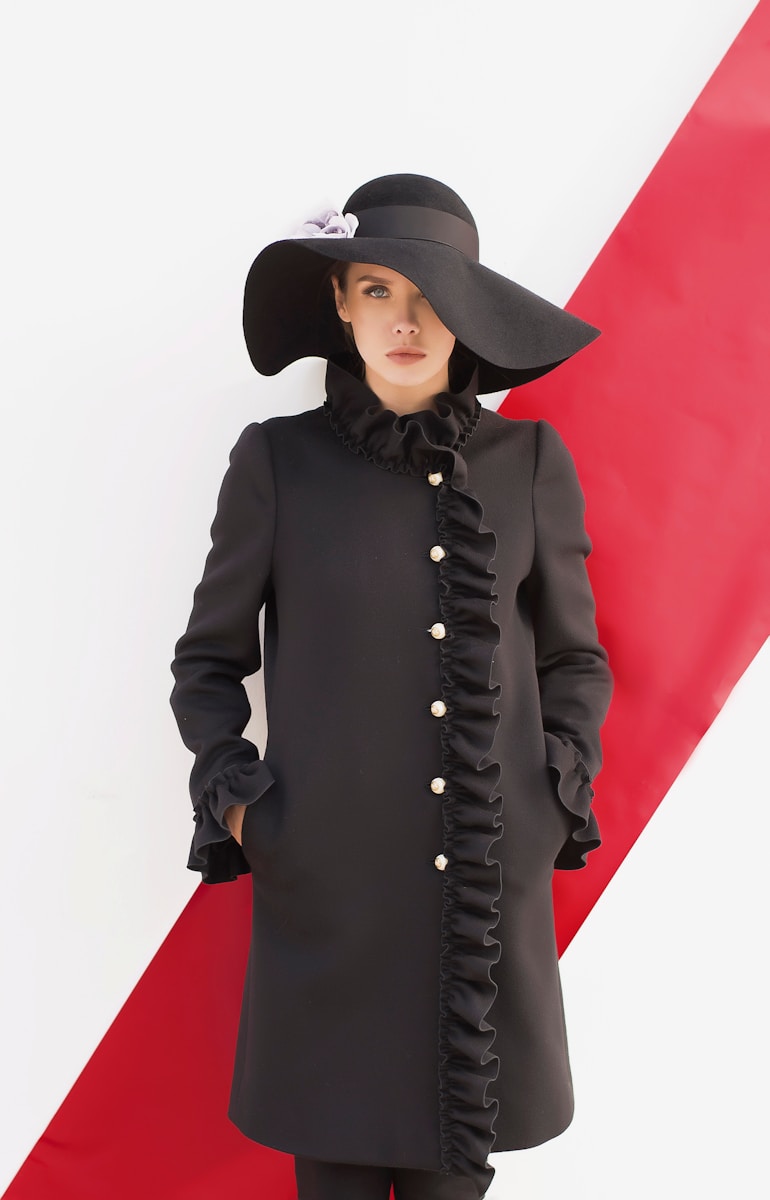Fashion has never been content with silence. It thrives on noise, color, and contradiction, especially when it comes to prints. From florals to stripes, paisleys to polka dots, prints have long been the language of playful rebellion. In recent years, however, a new wave of styling has emerged that does not simply use one print at a time—it piles them together with unapologetic exuberance. Known as print clash, or more poetically “graphic overload,” this movement celebrates chaos as artistry. Where minimalism asks for restraint, print clash insists that maximalism can be just as elegant, just as intentional, and far more expressive.
This essay explores the philosophy behind embracing chaotic prints, the historical roots of clashing patterns, and how modern fashionistas have turned what was once considered a faux pas into a bold form of self-expression.
A Brief History of Print Rebellion
Prints themselves have long been vehicles of cultural significance. In 18th-century Europe, chintz and toile spoke of colonial trade and exoticism. In the 1960s, psychedelic swirls captured the countercultural spirit, while punk plaid in the 1970s became a visual rejection of establishment norms. Each era has played with prints as signals of identity.
Clashing them, however, was once considered bad taste. Fashion handbooks of the early 20th century often urged harmony: stripes with solids, florals with neutrals. To wear two bold prints together was to risk being labeled “loud.” Yet as the 20th century progressed, designers began challenging these rules. Vivienne Westwood’s anarchic layering of tartans and animal prints in the late 1970s cracked open the possibility that chaos itself could be stylish. By the 1990s, brands like Versace cemented the idea that more could indeed be more.
The Philosophy of Chaos
At first glance, print clash appears unruly. Yet beneath the surface lies an intentional philosophy: a refusal to be boxed in by convention. Embracing graphic overload is about rejecting the fear of “too much.” It celebrates contradiction, finding harmony not in simplicity but in the exuberant layering of opposites.
Psychologically, chaotic prints are stimulating. Humans are wired to seek novelty, and clashing patterns offer endless micro-surprises. Stripes against florals, checks against animal motifs—each juxtaposition jolts the eye, reminding us that style can be playful and liberating.
There is also an emotional element. In uncertain times, maximalist dressing provides a kind of armor: if the world feels chaotic, why not meet it with chaos of your own design?
Rules Behind the Rule-Breaking
Though print clash seems chaotic, successful examples usually rely on subtle organizing principles:
Color Cohesion
Even wildly different prints can coexist if they share a color family. A red plaid with a floral containing crimson petals creates visual unity amid contrast.
Scale Play
Combining small, intricate patterns with large, bold prints creates balance. Tiny polka dots against oversized zebra stripes feel dynamic without overwhelming.
Neutral Anchors
Sometimes a belt, jacket, or pair of shoes in a solid neutral tone acts as a buffer, grounding the look.
Confidence
Perhaps the most important rule: own the choice. Print clash works best when the wearer commits fully, treating the ensemble as intentional art rather than accident.
These guidelines show that chaos in fashion isn’t sloppy—it’s orchestrated, much like abstract art that appears random but is deeply calculated.
Cultural Dimensions of Clashing Prints
The Western concept of “clashing” is itself culturally specific. In many African traditions, bold juxtapositions of prints are the norm rather than the exception. Kente cloth, Ankara wax prints, and Maasai shukas often layer vibrant geometric and organic patterns in ways that feel joyful and communal. Similarly, Japanese kimonos historically combined florals with waves or geometric motifs, layering complexity as a sign of richness.
The global embrace of print clash in contemporary fashion can be seen as both a recognition and celebration of these traditions. What Western fashion once dismissed as “too much” now pays homage to cultural practices that never saw chaos as a flaw but as a creative principle.
The Street Style Revolution
Runways may have introduced print clash, but it is street style that has given it life. Outside fashion weeks in New York, Paris, and Tokyo, photographers capture influencers mixing leopard coats with striped trousers, or polka-dot skirts with graphic tees. These looks thrive because they are authentic; they are not designed to please rules but to capture individuality.
Social media has amplified this energy. Instagram feeds and TikTok styling videos often reward bold visual content, and clashing prints photograph brilliantly. What once seemed unwearable for everyday life now feels aspirational precisely because it is daring.
Designers Embracing Graphic Overload
Several modern designers have elevated print clash into high art:
Versace: Known for baroque prints layered with animal motifs, Versace thrives on sensory overload.
Dries Van Noten: Masters the art of combining florals with stripes in ways that feel painterly rather than haphazard.
Gucci under Alessandro Michele: Revived the brand with an eclectic maximalism that mixes tartan, florals, logos, and geometrics in deliberate chaos.
Kenzo: Continues to juxtapose traditional Japanese influences with contemporary streetwear graphics.
Their work demonstrates that print clash is not about ignoring taste but about expanding its boundaries.
The Psychology of Wearing Prints
Wearing bold, clashing prints alters not only how others see you but also how you feel. Fashion psychologists suggest that clothing impacts mood and behavior. Wearing neutrals may feel safe, but it also risks invisibility. Graphic overload, in contrast, demands attention, often giving the wearer a sense of empowerment. It communicates confidence, daring, and creativity.
Of course, this also requires resilience. Print clash invites commentary—positive or critical. But that is part of its philosophy: embracing chaos means embracing visibility, rejecting the fear of standing out.
Everyday Strategies for Print Clash
For those intrigued but intimidated, integrating print clash into daily life can begin small:
Accessories: Pair a patterned scarf with a contrasting print blouse.
Footwear: Animal-print shoes with a striped dress create instant intrigue.
Layering: Start with a base print—like a floral dress—and layer with a patterned jacket.
Over time, confidence grows, and bolder combinations become possible: plaid trousers with polka-dot tops, or checks layered under florals with leopard accessories.
Print Clash in Interiors and Beyond
Interestingly, the philosophy of graphic overload is not limited to fashion. Interior design trends also embrace “maximalist eclecticism,” where bold wallpapers, patterned rugs, and clashing upholstery create visually rich environments. The same psychological appeal applies: layered patterns generate stimulation and joy.
This crossover suggests that embracing chaos is not a fleeting fad but a broader cultural moment. People seek comfort not in minimalism but in vibrancy and multiplicity, reflecting a world that feels fragmented yet alive.
Sustainability and Maximalism
In an age of sustainability, some critics view maximalism skeptically, associating it with overconsumption. Yet print clash can actually support sustainable fashion. By reimagining old garments and layering them creatively, wearers extend the life of their wardrobes. Vintage stores thrive on eclectic pairings, and upcycling often relies on mixing disparate fabrics. In this way, embracing chaos can be a form of conscious consumption.



